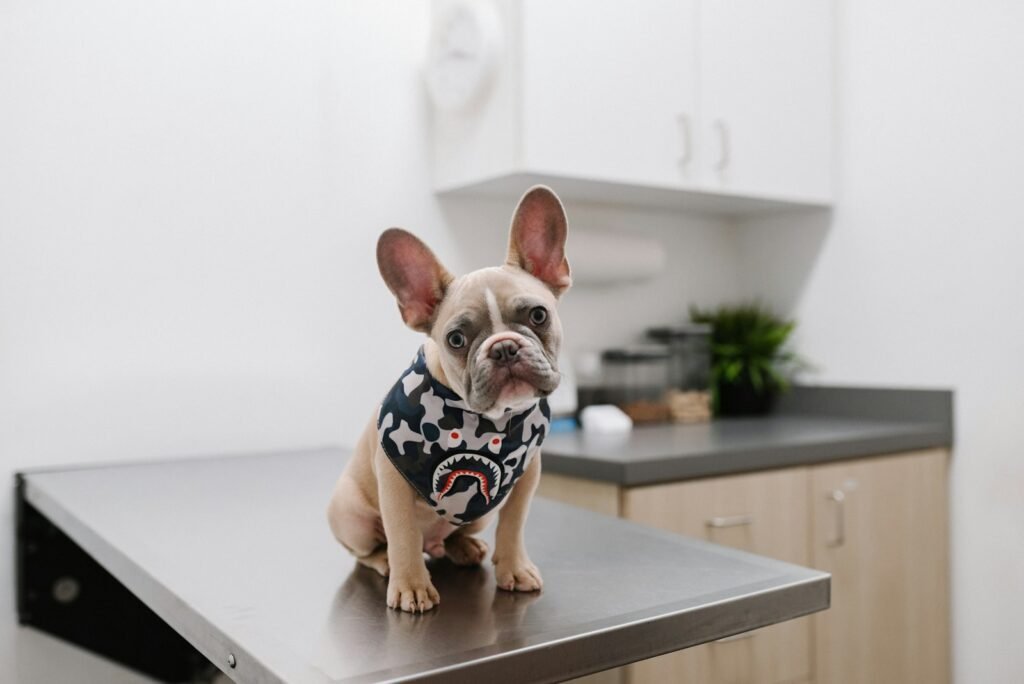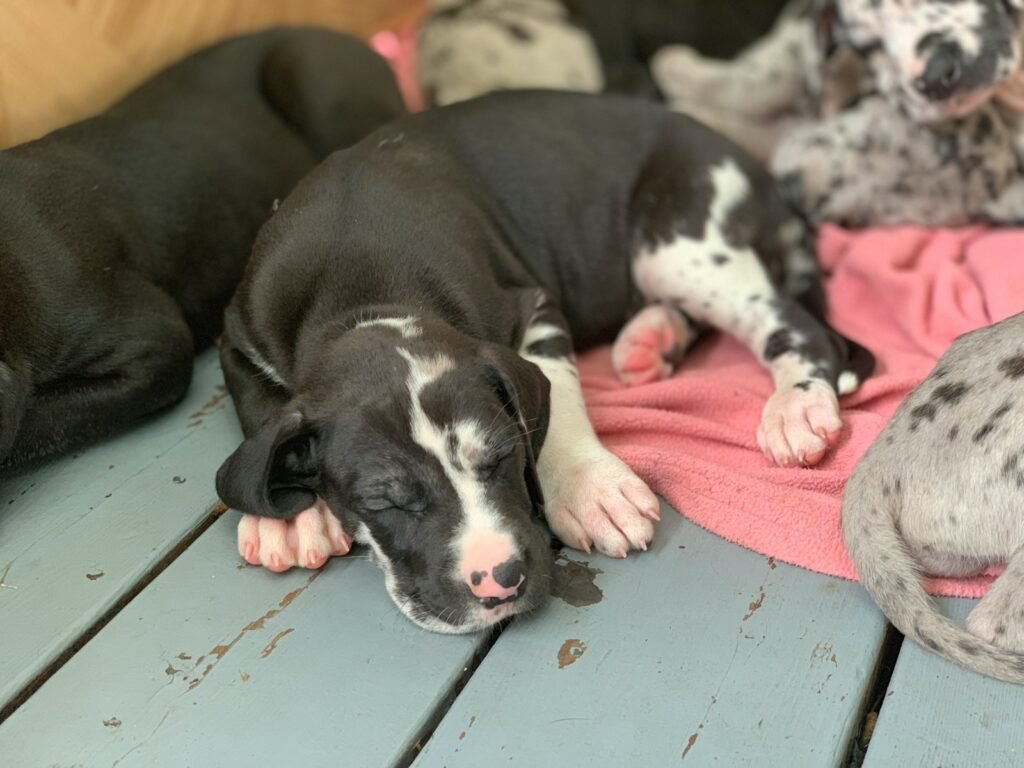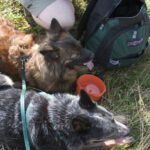You’ve just bought a puppy, or by some miracle, ended up caring for one. What do you do now? Here is a quick guide for those who are just about to start out.
There are two main areas of focus when examining dog health, disease preventative care and recognizing signs of potential problems. Preventative medicine is something you should attend to in effective dog care.
DHLPP/CCV vaccinations

At six weeks old puppies should begin a series of four DHLPP/CCV vaccinations three or four weeks apart.
The DHLPP/CCV vaccination is a combo vaccine commonly given to puppies to protect them against severe dog diseases. This is a closer look of what each part of the abbreviation stands for:
- DH: Distemper and Hepatitis
- LPP: Leptospirosis, Parvovirus, and Parainfluenza, Leptospirosis bacteria
- CC: Coronavirus (Canine Coronavirus)
What diseases does it protect against?
- Distemper: This is a terrible and often fatal viral disease that owners need to be aware of. It can be caught by the dog through the air, soil, or from the mother dog. Wildlife in an area can spread distemper to domestic dogs. Along with general lethargy and anorexia, the more alarming signs of distemper pus-like discharge from the eyes, vomiting, and swelling of the paws.
- Hepatitis: Also known as Canine Adenovirus Type 2, it can cause liver damage, respiratory problems, and fever.
- Leptospirosis: A bacterial disease spread through contact with infected animals’ urine or contaminated water. It can cause kidney damage, liver failure, and even death.
- Parvovirus: A highly contagious and often fatal viral disease that attacks the intestines and white blood cells.
- Parainfluenza: A virus that causes respiratory symptoms like coughing, sneezing, and runny nose.
- Canine Coronavirus: This short-lived virus causes mild gastrointestinal symptoms like diarrhea and vomiting. While not as serious as the other diseases covered in the vaccine, it can be uncomfortable for puppies.
Why is this vaccination important?
These diseases can be very serious, even fatal, for puppies. Vaccinating your puppy with the DHLPP/CCV helps protect them from getting sick and suffering from these illnesses.
When should my puppy get the DHLPP/CCV vaccination?

The recommended vaccination schedule for puppies can vary depending on several factors, such as their breed, lifestyle, and if certain diseases tend to be in your area. It’s always best to consult with your veterinarian to determine the best vaccination schedule for your individual puppy. But, puppies typically start their vaccination series between 6-8 weeks old and receive booster shots at regular intervals until they are fully immunized.
Are there any side effects to the DHLPP/CCV vaccination?
Most puppies tolerate the DHLPP/CCV vaccination well with minimal side effects, which may include mild soreness at the injection site, lethargy, or loss of appetite. These side effects are usually temporary and resolve on their own within a day or two.
The DHLPP/CCV vaccination is an important part of keeping your puppy healthy and protected from serious diseases. To make sure your puppy gets the the proper care they need, always consult with your veterinarian to determine the best vaccination schedule for your puppy.
Worms
Puppies should be de-wormed often and started on heartworm preventative at an early age. This program should be maintained indefinitely. An annual visit to a local veterinarian is necessary to maintain your dog’s health.
Puppies need to be dewormed frequently during their early months to prevent and eliminate internal parasites like roundworms, hookworms, whipworms, and tapeworms. Here’s a general timeline:

Between 2 and 3 weeks old: This is the first deworming, targeting worms passed from mother to puppy.
Every 2 weeks until 8 weeks old: More deworming rounds tackle developing worms.
Monthly until 6 months old: Continued deworming ensures parasite control.
After 6 months: Switch to an adult dog deworming schedule, usually every 3-6 months, depending on the risk of parasite exposure.
There are are some things to consider with your puppy:
Breed: Some breeds are more susceptible to certain parasites
- Flat faces: Brachycephalic (or flat faced) breeds like Pugs, Bulldogs, and Shih Tzus have shorter snouts and narrower airways, and this can raise problems related to respiratory parasites like lungworms.
- Long coats: Breeds with luxurious, long fur like Golden Retrievers, Chow Chows, and Collies can get fleas, ticks, and other external parasites more easily.
- Hunting or working breeds: Hunting dogs or dogs that do outdoor work (Beagles, Labradors, German Shepherds) may have a higher exposure risk to parasites encountered in the soil or water, and especially with prey animals they have caught.
Lifestyle: Puppies with high exposure risk (e.g. other dogs are always around whether at home or at the park) may need more frequent deworming.
Local parasite prevalence: The abundance of certain parasites in your area can influence the deworming schedule. For example, Florida’s warm and humid environment means parasites are all over the place. Northern states are cooler and so don’t have as many parasites, but water-borne parasites are still a risk. So the local area will have different concentrations of mites, mosquitos, worms, and other parasites.
Always consult your veterinarian: They can assess your puppy’s individual risk factors and recommend the most appropriate deworming schedule for their health and safety. They can also advise on the type of de-wormer to use and ensure it is safe and effective for your puppy’s age and breed.
Additional tips:
- Regularly monitor your puppy for signs of worms, such as diarrhea, vomiting, weight loss, or scooting.
- Practice good hygiene, like washing your hands after handling your puppy and cleaning up their dog poo promptly.
- Consider preventive measures like flea and tick control, as some parasites can be transmitted through fleas and ticks.
Other problems

In addition to administering vaccinations, the vet will examine the dog’s teeth and stool, and look for any obvious maladies. But it is also important for new pet owners to be able to recognize any signs of potential dog health problems.
Skin problems
Skin problems are quite common and can present themselves in a number of various ways. Skin allergies are very common in many dogs and can cause hair loss and ‘hot spots’. These ‘hot spots’ are sores on the skin surface that ooze and become easily infected. They are also very painful and hard to deal with because of the dog’s constant licking. The skin allergies that cause ‘hot spots’ are often mistaken for flea infestation problems; an easy way to tell the difference is by watching the dog. Chewing the top of his rump is a good indication of fleas, while scratching his head, neck and front legs indicate allergies.
Signs of potential health problems also present themselves in the dogs stool. If the stool appears runny or discolored you may need to visit the vet. Parasites or a change in diet are usually the culprit and most often easily remedied.
GDV

Another less common but very serious threat to your dog’s health is Gastric Dilatation Volvulus (sometimes referred to as “Bloat”). Large, deep chested dogs, for example Dobermans, Great Danes, and Irish Setters, are predisposed for this condition which causes their stomachs to flip if they exert themselves after ingesting large amounts of water. Surgery is most likely required if your dog has a serious case of GDV.
For a new puppy owner, this might appear a big responsibility you have chosen to bear. You might have second thoughts about caring for a puppy… But it doesn’t mean that this has to be hard program to follow. After the puppy stage, all going well, just make sure you take your dog for a check up every year and be attentive to any imminent health problems. Feed and exercise your dog well. This apply to yourself as well.










